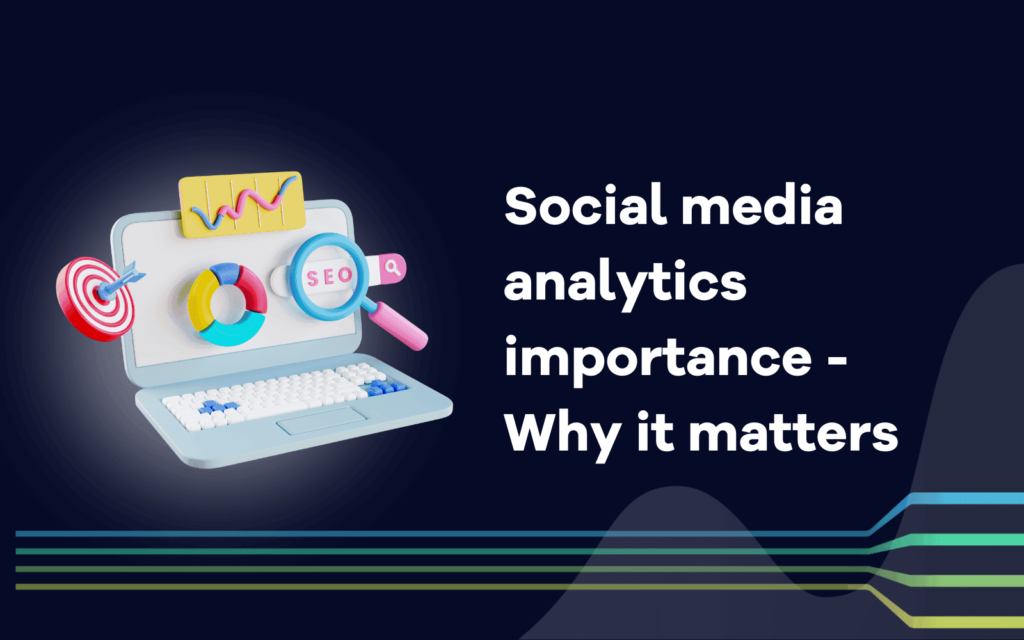social media marketing services
Social Media Marketing services is doing on the social media platforms and websites to promote product or services. Social media marketing services (also known as digital marketing and e-marketing) is the use of social media—the platforms on which users build social networks and share information—to build a company’s brand, increase sales, and drive website traffic. In addition to providing companies with a way to engage with existing customers and reach new ones, SMM has purpose-built data analytics that allows marketers to track the success of their efforts and identify even more ways to engage.
The key significance of tracking social analytics is not only to prove ROI but also to evaluate the success of social media campaigns, while guiding informed decisions for social media strategies. Additionally, the main areas of social media analytics include performance metrics, audience demographics, competitor insights, paid ad results, influencer impact, and brand sentiment.

Social media marketing is the use of online social media websites and web pages as channels to leverage the promotion of the product or service. Social media marketing, also termed as digital marketing or e-marketing, employs the social media channels where users design their networks and share information in creating a firm’s brand, sales, and web traffic. SMM provides an opportunity to build a connection with potential customers and existing customers; also, it is equipped with analytics features that allow tracing the results of marketer’s activity and discovering more opportunities for interaction.
Why Social Media Marketing powerful?
Mass Reach: With billions of users worldwide, social media platforms form trillions. This enormous market allows brands to reach a huge section of potential customers over a very short period.
2. Targeted advertisements: SMM makes it possible to send targeted advertisements to different demographics, interests, and behaviors so that your content will come in the right hands at the right time.
3. Engagement: Social media provides direct interfaces through which companies reach out to customers. Such interaction incites relationships and causes love to grow to a brand because the customers are admired.
4. Cost-Effective: SMM is quite cheap when compared to other modes of advertising. Many platforms offer flexible budgeting options, making it affordable for businesses of all sizes to execute successful campaigns. 5. Live feedback: Brands can know when people like or dislike their products or services through comments, likes and shared posts which serves to understand their preferences and to be better in changes.
6. Brand Awareness: Consistent posting of engaging content fosters brand visibility. The more people see and engage with a brand the more familiar, which will easily translate to increased trust and ultimately sales.
7. Analytics and Insights: Mediums have richer analytics that are given to corporate clients to measure their campaign success, understand how people behave, and refine their strategies for better results. Altogether, SMM is extremely powerful as a building block for branding presence, brand engagement with the customer, and ultimately sales in this age of digitization.
Activate approach for using social media as a marketing tool:
1. Regular Posting: Keep posting regularly to keep your audience engaged. This would include posting on updates, promotions, or useful information on subjects related to your industry.
2.Engagement:Engage with all the comments,messages and mentions. Engagement helps you be in close touch with your audience, the third most important ingredient for meaningful influence.
3. **Content Mix**: Engage a mix of content types for the audience, including images, videos, stories, polls, and live sessions.
4. **User-Generated Content**: Encourage your followers to share their experiences with your brand. Sharing user-generated content can be very effective in creating authenticity and community.
5. Influencer Collaborations Work with the influencers who represent your brand best. Their endorses help bring you out to more people and build trust.
6. **Social Listening**: Monitor conversations around your brand and industry. This helps you understand customer sentiments and identify opportunities for engagement.
7. Targeted Advertising Using Paid Ads Targeted Ads can reach particular target demographics, thereby making your website or products more visible and attracting more visitors.
8. **Analytics Review**: Review your social media activities regularly. In knowing what works and what doesn’t, you can make strategies that could help you better. An active approach can help you to take advantages of social media to support your marketing strategy and get closer to your target audience. include transition words in the paragraph but do not change the content
passive approach for using social media as a marketing tool :
1. _Scheduled Posting_. Schedule posts at intervals so that you can maintain an ongoing presence without daily interaction. Well, the best part about scheduling is that you do not have to keep checking back in order to involve your audience.
2. **Content Creation**: Create good, evergreen content that will be shared in the future. This can include blog posts, infographics, or videos that can guide the public to find value for their information.
3. Brand Awareness Using social media primarily as an awareness program for the brand, share updates, news, and promotion-oriented content to keep in the consciousness of your potential customers without necessarily soliciting direct engagement.
4. **Low Participation**: While you may occasionally read a comment or message, this is mainly an advertisement broadcast rather than adding to discussions or personal relationships.
5. **Follow the Trends:** Follow trends in the industries and various activities of competitors. You can learn their trends without ever opening your mouth to chatter with them on the same topic.
6. **SEO Optimization**: Accessibility to a wider audience can be obtained by tagging your site through social media. It can improve search phrase rankings based on passive activities. 7. Analytics tracking: Use social media analytics to track your performance and see exactly how well your content is performing. While the emphasis here is on analytics and less on direct engagement with your audience based on insight analysis. include transition words to this paragraph without changing the content.
How social media marketing works ?
1. **User Accounts**: Users or organisations open and edit accounts on social networking sites, including Facebook, Instagram, and Twitter. This allows them to write posts, subscribe to accounts, and engage with others.
2. **Content Composition**: Also, users can publish different types of content, including texts, photographs, videos, and stories. The stuff can be shared between their followers or publicly- dependently on the privacy settings.
3. **Networking and Connections**: Users also get the capacity to connect with friends, family, and brands by following or friending them. Thereby, making a network where he may share content and its target audience may view it.
4. Engagement: Users can also engage with content through a like, comment, or share. Such engagements mean content spreads to the greatest audience because engagements may appear in the feeds of followers. 5. **Algorithms**: Social media uses algorithms to figure out what information they want to show to the users in their feed. While the algorithm will consider user engagement, relevance, and recency when serving content it deems most interesting to the user.
6. **Groups and Communities**: Many sites also offer users the option to join groups or communities according to shared interests. This keeps related users discussing and sharing their content with one another.
7. Advertising Business entities can leverage social media sites for advertising. Targeted ads appear in the feeds of users who match certain demographic features, interests, or behaviors of the business. This effectively guides them to their potential customers. 8. **Analytics**: Lastly, social media platforms provide insights and analytics to users and businesses, allowing them to track engagement, reach, and other metrics to evaluate the effectiveness of their content and strategies.
Embrace the benefits of SMM :

1. It proves ROI: Analytics helps measure the return on investment in cases where campaigns are applied effectively and tracked well.
2. Improving Strategy: Data insight will also allow organizations to better fine-tune their social media strategies toward achieving better results.
3. Identifies Trends: Social media analytics, therefore, indicates emergent trends that help businesses to be ahead of their competitors.
4. Audience Understanding: It also provides tremendous broad demographic and behavioral information, which makes for more targeted and pertinent content.
5. Engagement Metrics: It also tracks engagement in the form of likes, comments, and shares for evidencing content performance and interest to the audience.
6. Competitor Intelligence: It also follows how the competitors are performing and compares benchmarking within an industry.
7. Optimizes Content: Hence, businesses track and identify which kind of content works best and accordingly, fine-tune their tactic on it.
8. Influences Decision Making: The data-driven insights drive the decision of marketing and businesses to lead campaigns toward better improvements.
9. Real-Time Feedback: Analytics provide feedback in time on campaign performance so that the adjustments can quickly be done for better results.
10. Improves Customer Satisfaction: Customer feeling and engagement will also enable a business to respond fast to the feedback and ultimately enhance the customer relationships.
Thus, social media analytics is the best practice to measure the return on marketing efforts. By accessing these performance metrics, based on audience behavior and competitor moves, businesses can choose their campaigns to make them much more impactful and increase the return on investment. In addition to proving ROI, social media analytics guides future strategies, thus keeping a business competitive, engaging its audience effectively.

Leave a Reply